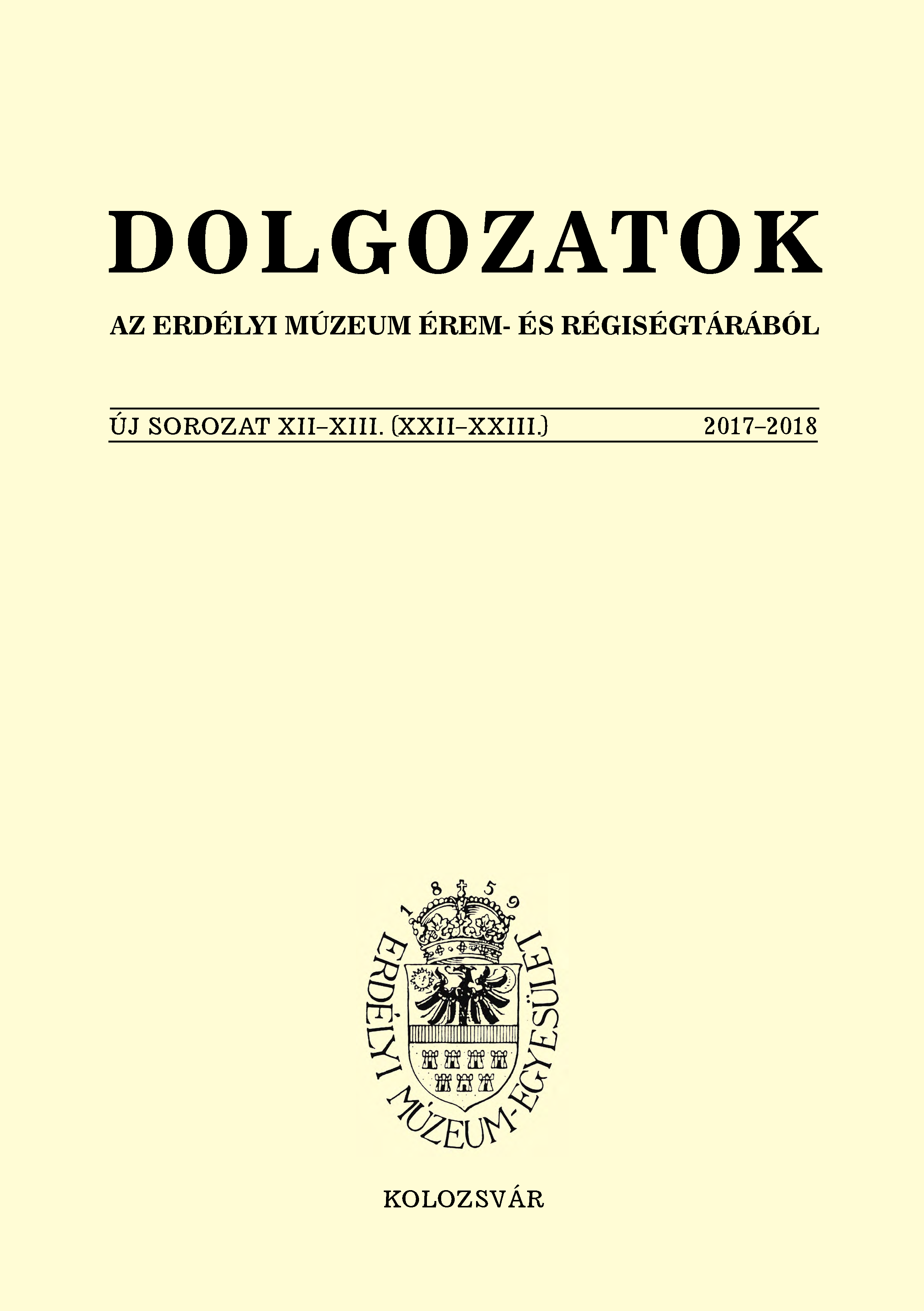Buday Árpád erdélyi római koros kutatásai
The Roman age research of Árpád Buday in Transylvania
Author(s): Lóránt VassSubject(s): Archaeology, Ancient World
Published by: Erdélyi Múzeum-Egyesület
Keywords: Porolissum; Roman villa; Dacia; architecture; small find; Mănerău; Gârbou; vault tubes; eastern influence; servants’ home; atrium
Summary/Abstract: Árpád Buday was one of the most important Roman archaeologists at the rise of the archaeological research in Transylvania in the beginning of the 20th century. The results of his very diverse activity are mostly accepted by scholars even today; his works are constantly cited in scientific papers. This article tends to explore and determine the scientific profile of this very productive scholar, and meanwhile, to highlight the impact of the social, political and cultural ideologies of his own era on his studies and scientific outputs. Prior to 1924, the date of his emigration to Szeged, Hungary, following the annexation of Transylvania to Romania, his archaeological field investigations in Transylvania were focusing on four different domains. He was best-known in his own age for his landmark research related to the Roman limes in Dacia. His results in this domain, however, are not discussed here, since a separate article deals with them in the same volume. What is very relevant from the perspective of my investigation, is the fact that he was the first archaeologist who has carried out modern and very systematic excavations on Roman villa sites (Mănerău, Hunedoara County: Pl. 4; Apahida/Tarcea Mică, Cluj County: Pl. 5; Gârbou, Sălaj County: Pl. 6). No later excavations were undertaken at these sites since his investigations, so his results are the only evidences of Roman villa culture at these parts of the province. Beside the villas, Buday is mostly renowned for his pioneer researches in Porolissum (Moigrad, Sălaj County). Although many attempts have been done prior Buday’s activity to identify the Roman settlement Porolissum known from inscriptions, he was undoubtedly the first scholar who managed to localize it, and to reconstruct some basic chronological and topographical aspects of the Roman settlement. His excavations carried out in 1908, 1909, and 1913 in a presumed insula of the city were among the most meticulous ones in that period (Pl. 1–3). Later excavations near his site using modern technology (geomagnetic surveys) have also confirmed the assumption of Buday regarding the existence of the medieval Saint Margaret monastery (11th–12th c.) at Meseș (excavations from 1915), which has been known only from written documents (Pl. 3). The consecutive campaigns at this site delivered a large quantity of small finds which were published in a very professional manner. Find context, precise dimensions, analogies, spatial distribution were all mentioned in these reports. Hence, his small find publications meet even the requirements of our modern standards. Buday’s fourth main research domain is, without any doubt, the Roman small find processing. He has published not only the finds recovered during his own excavations, but also pieces of the rich Numismatic and Archaeological Collection of the Transylvanian Museum Society in Cluj (Pl. 7–8). As a citizen of the Austrian-Hungarian Monarchy, his working method and approach is totally positivist, as many of other scholars of his age at the turn of the 20th century. From his footnotes and references it is obvious that his formation and education is related to the German-Austrian education system. Most of his references, analogies for constructions and small finds are taken from German literature. It is very interesting, though, that Buday is totally indifferent to the trends and subjects which have dominated the discourse of historical and archaeological studies of the Roman Age in his time, such as Romanization, for instance. He does not reflect on cultural processes and is not interested in the possible acculturation of the local population, either. Instead, he projects the social and cultural structures of his own age to the Roman realities. His interpretations on the architectural elements, for instance, are totally defined by these. A reoccurring element in the planimetry of the buildings unearthed by him is the delimitation of the so-called “manor” and “servant” part of the constructions (he consequently calls Roman slaves “servants”, just like in his own age). The classification of building parts based on social aspects is so deeply set that he determines the function of other rooms according to these categories. The other scholarly cliché he uses frequently in his interpretations, is the forced identification of the atrium in the case of provincial habitual buildings or villas which could be due to his classical formation. Árpád Buday may not be the most influential Roman archaeologist in the first half of the 20th century, his excavations carried out in Transylvania are all exploratory investigations though. His results in the topography of Porolissum or in the architecture of villas in Transylvania, not to mention his find publications are impossible to ignore today. Despite his humorous interpretations in some cases, his results turned to be surprisingly correct.
Journal: Dolgozatok az Erdélyi Múzeum Érem- és Régiségtárából. Új sorozat
- Issue Year: 2018
- Issue No: XII-XIII
- Page Range: 31-60
- Page Count: 30
- Language: Hungarian

